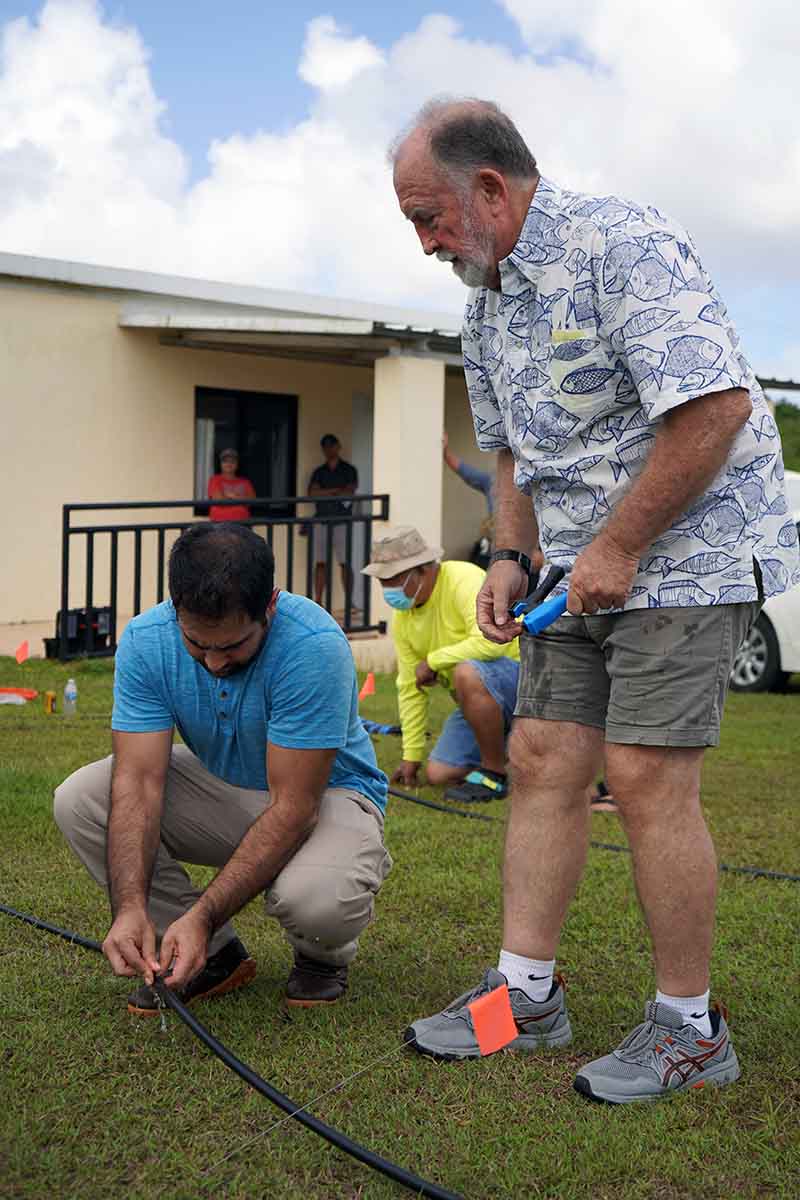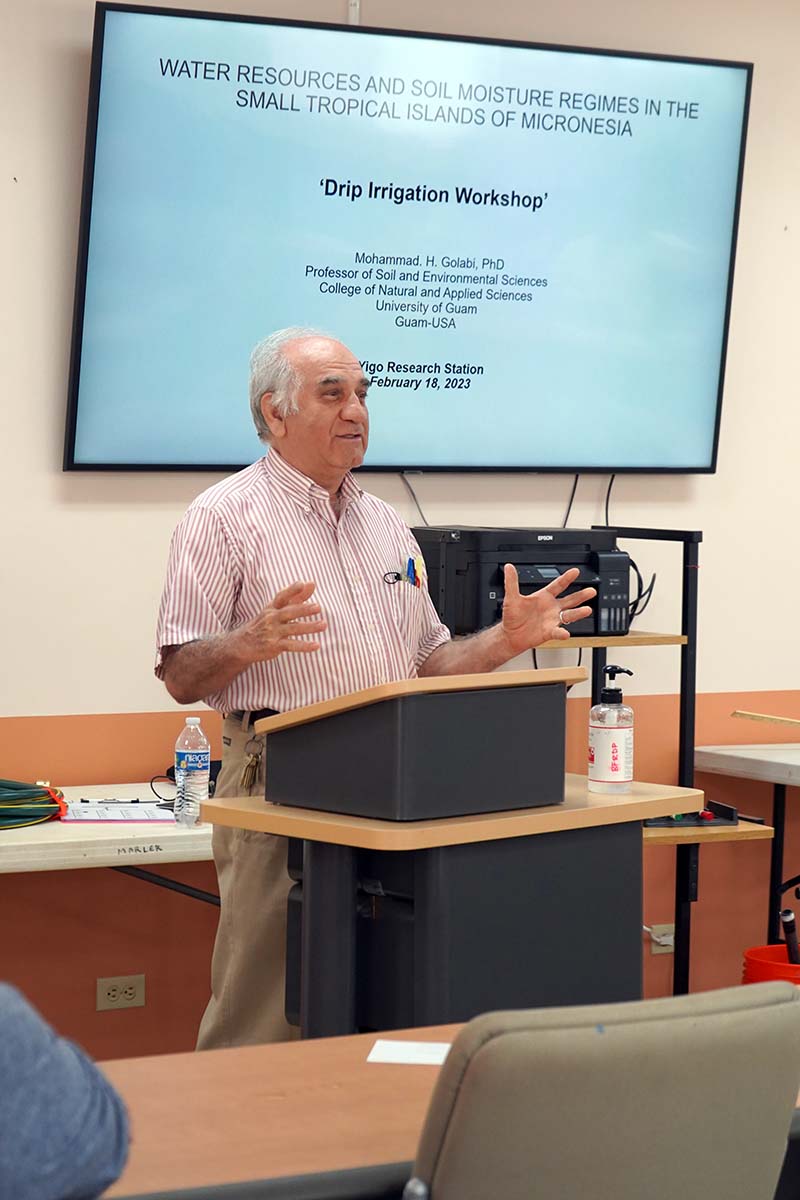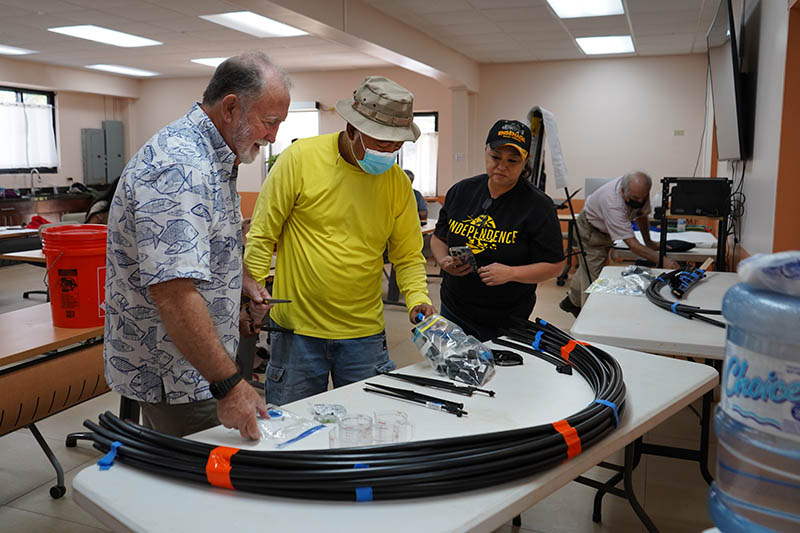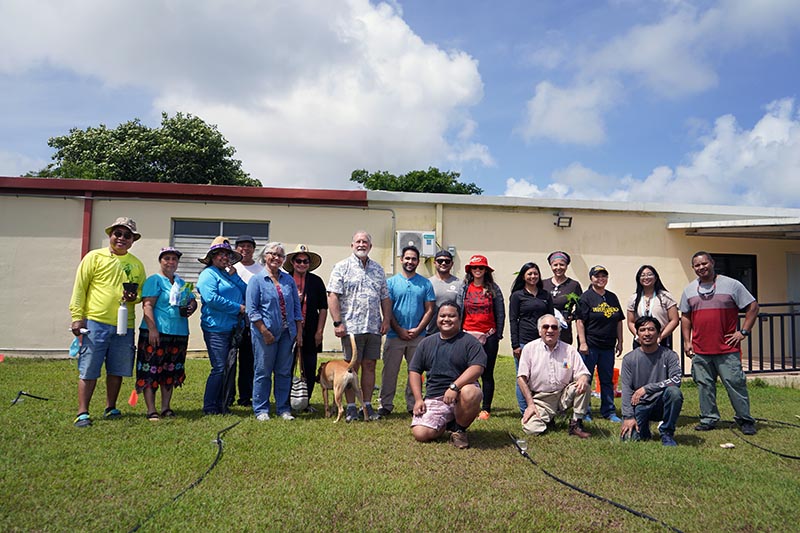Farmers, gardeners learn to build drip irrigation systems at UOG workshop
Farmers, gardeners learn to build drip irrigation systems at UOG workshop
Farmers, gardeners learn to build drip irrigation systems at UOG workshop
2/28/2023
Twenty people from Guam’s agricultural and gardening community attended the University of Guam’s Drip Irrigation Workshop on Feb. 18, 2023, at the UOG Yigo Research & Education Center. The workshop was conducted through the Beginner Farmer & Rancher Development Program at the Western Pacific Tropical Research Center at UOG.

“Much less water is used, and the farmer has a lower water bill and higher yields. Drip systems are precise in delivering water to the root zone, and this leads to greater harvests,” said Dr. Robert Bevacqua, a horticulturist with the Beginning Farmer & Rancher program who led the workshop along with UOG soil scientist Dr. Mohammad Golabi and Clancy Iyekar, a chemist in the UOG Soil Lab.
With local water rates on the rise — with a 5.5% increase in October 2022 and another 5.5% increase planned for 2023 — drip irrigation is a way for farmers to cut costs.
“It is a small part of the larger effort to make Guam more sustainable and self-sufficient,” he said.
Components and considerations of drip irrigation
Bevacqua introduced participants to the tools and materials needed for a drip irrigation system. He said the system is appropriate for the majority of farms in Guam, as long as the water quality is free of particles that can clog the system.
In a separate lecture in the workshop, Golabi taught participants about the relationship between the water, soil, and plants — how the amount and timing of watering affects the nutrients in the soil and, subsequently, the plants’ growth rate. And in a third lecture, Iyekar demonstrated how to access weather data collected through the UOG Soil Lab and use it to determine how much and when to water crops.

'I plan to set up a system at my home'
A highlight of the workshop was the hands-on portion, where participants worked to connect pipes, set up drippers, and collect water to build a system themselves.
“I found it enjoyable to interact with passionate and like-minded people who want to broaden their knowledge to use at home or on their commercial farms and gardens,” said Joseph Pabunan, a workshop participant and a student majoring in agriculture at UOG. “With this newfound knowledge, I plan to set up a system at my home to make watering the plants easier instead of refilling my watering can all the time.”
Gloria Taitano, who has taken up gardening in her retirement, was another workshop attendee.
“Now I can put what I’ve learned into practice as I plan my garden setup and will try to attend as many workshops as I can,” she said.
More information on drip irrigation
Residents interested in building their own drip irrigation system can learn more by contacting the Western Pacific Tropical Research Center at (671) 735-2101 or wptrcadmin@triton.uog.edu.


